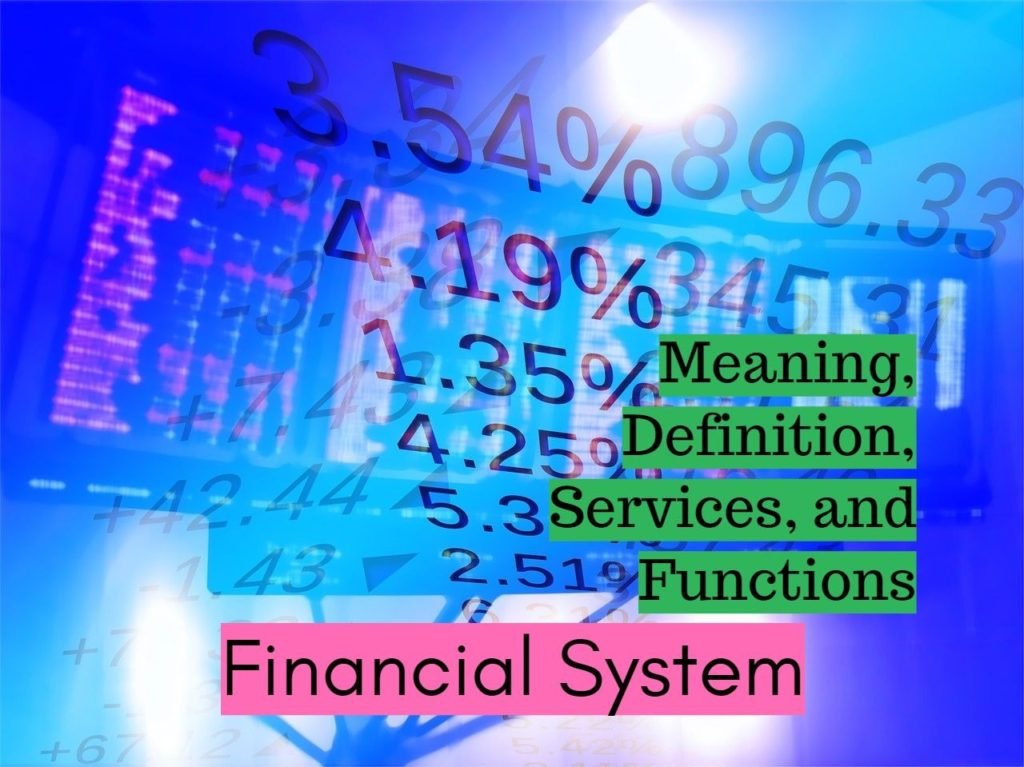Meaning: Life is a roller coaster ride and is full of twist and turn. The insurance policy is a protection against the uncertainties of life. Insurance is defined as a cooperative tool which is meant to spread the damage caused by a particular risk, which comes in contact with it and who agrees to insure themselves against that risk. As in all insurance, the insured person pays the premium in risk, transfer, and exchange to the insurer. Do you study to learn: If Yes? Then read the lot. Let’s Study: Meaning, Definition, Principles, and Functions of Insurance. Read this in the Hindi language: अर्थ, परिभाषा, सिद्धांत, और बीमा के कार्य।
The concept of Insurance Discussing the topic: Meaning, Definition, Principles, and Functions of Insurance.
These risks are such that they can not be known in advance when they win and provision for them against any person is physically impossible. In the case of risk life insurance assumed by the insurer, there is the risk of death of the insured. Insurance policies cover the risk of life as well as other assets and valuables such as home, automobile, ornaments etc.
Depending on the risk, they cover, insurance policies can be classified into life insurance and general insurance. Life insurance products include the risk against incidents such as death or disability for the insurer. General insurance products include risks against natural disasters, theft, etc. Before this study, once read this article: Features, Types, and Importance of Insurance.
How do you understand insurance? Meaning.
Insurance is a system through which some people are harmed, who are aware of many risks. With the help of insurance, a large number of people aware of similar risks contribute to a common fund, in which it is good to face losses by some unfortunate people due to unfortunate incidents.
Insurance is a protection against financial loss arising out of an unexpected event. The insurance policy not only helps in reducing risk but also provides financial cushions against unfavorable financial burdens. Insurance is defined as a cooperative tool which is meant to spread the damage caused by a particular risk, which comes in contact with it and who agrees to insure themselves against that risk.
The risk is the uncertainty of financial loss. Insurance is also defined as a social tool to deposit the money in order to meet the risk of uncertain loss through a certain risk for the injured person against the risk. Insurance provides financial protection against the loss arising from an indefinite event.
One person can take advantage of this protection by paying the premium to the insurance company. Generally, a pool is created through contributions made by those wishing to save from common risk. In the case of indeterminate incidence from this pool, any damage to the insured is paid.
Life insurance has come a long way from earlier days when it was originally considered as a risk-cover medium from time to time, which included temporary risk situations like ocean voyages. Since life insurance became more established, it was felt that this was a useful tool for many situations, including temporary needs, hazards, savings, investment, retirement etc.
Insurance is a contract between two parties, so that a party agrees to take risk in exchange for ideas that go in the form of premium and to any other party in the event of an indefinite event (death) or termination of a certain term in the case of life insurance After compensating for the latter or the other party, any other party is promised to pay a certain amount. In the case of general insurance, there is an uncertain event. The risk side is known as ‘insurer’ or ‘assurance’ and the party whose risk is covered is known as ‘insured’ or ‘assured’.
Definition of Insurance:
The definition of insurance can be seen from two viewpoints:
Functional Definition:
Insurance is a co-operative device of distributing losses, falling on an individual or his family over a large number of persons each bearing a nominal expenditure and feeling secure against heavy loss. Insurance is a co-operative device to spread the loss caused by a particular risk over a number of persons, who are exposed to it and who agree to insure themselves against the risk.
Thus, the insurance is;
- A co-operative device to spread the risk.
- The system to spread the risk over a number of persons who are insured against the risk.
- The principle to share the loss of each member of the society on the basis of the probability of loss to their risk, and.
- The method to provide security against losses to the insured.
Similarly, another definition can be given. Insurance is a co-operative device of distributing losses, falling on an individual or his family over a large number of persons, each bearing a nominal expenditure and feeling secure against heavy loss.
Contractual Definition:
Insurance may be defined as a contract consisting of one party (the insurer) who agrees to pay to other parties (the insured) or his beneficiary, a certain sum upon a given contingency against which insurance is sought. Insurance has been defined to be that in which a sum of money as a premium is paid in consideration of the insurance incurring the risk of paying a large sum upon a given contingency.
The insurance, thus, is a contract whereby:
- Certain sum, called premium, is charged in consideration.
- Against the said consideration, a large sum is guaranteed to be paid by the insurer who received the premium.
- The payment will be made in a certain definite sum, i.e., the loss or the policy amount whichever may be, and.
- The payment is made only upon a contingency.
The more specific definition can be given as follows,
“Insurance may be defined as a consisting one party (the insurer) agrees to pay to the other party (the insurer) or his beneficiary, a certain sum upon a given contingency (the risk) against which insurance is sought.”
So it is clear that every risk involves the loss of one or the other kind. The function of insurance is to spread this loss over a large number of persons through the mechanism of co-operation.
The important Principles of Insurance:
The main motive of insurance is cooperation. Insurance is defined as the equitable transfer of risk of loss from one entity to another, in exchange for a premium.
Insurance is based upon two basic principles:
Cooperation:
Insurance is a co-operative device. If one person is providing for his own losses, it cannot be strictly insurance because in insurance the loss is shared by a group of persons who are willing to co-operate.
Probability:
The loss in the form of premium can be distributed only on the basis of the theory of probability. The chances of loss are estimated in advance to affix the amount of premium. Since the degree of loss depends upon various factors, the affecting factors are analyzed before determining the amount of loss.
With the help of this principle, the uncertainty of loss is converted into certainty. The insurer will not have to suffer loss as well as the gain windfall. Therefore, the insurer has to charge only so much of amount which is adequate to meet the losses.
The insurance, on the basis of past experience, present conditions and future prospects, fixes the amount of premium. Without premium, no co-operation is possible and the premium cannot be calculated without the help of the theory of probability, and consequently, no insurance is possible.
The important principle of insurance are as follows:
Nature of contract:
Nature of contract is a fundamental principle of the insurance contract. An insurance contract comes into existence when one party makes an offer or proposal of a contract and the other party accepts the proposal. A contract should be simple to be a valid contract. The person entering into a contract should enter with his free consent.
Utmost good faith:
Under this insurance contract, both the parties should have faith over each other. As a client, it is the duty of the insured to disclose all the facts to the insurance company. Any fraud or misrepresentation of facts can result into the cancellation of the contract.
Insurable interest:
Under this principle of insurance, the insured must have an interest in the subject matter of the insurance. The absence of insurance makes the contract null and void. If there is no insurable interest, an insurance company will not issue a policy. Insurable interest must exist at the time of the purchase of the insurance. For example, a creditor has an insurable interest in the life of a debtor, A person is considered to have an unlimited interest in the life of their spouse etc.
Indemnity:
Indemnity means security or compensation against loss or damage. The principle of indemnity is such a principle of insurance stating that an insured may not be compensated by the insurance company in an amount exceeding the insured’s economic loss. In the type of insurance, the insured would be compensated with the amount equivalent to the actual loss and not the amount exceeding the loss.
This is a regulatory principle. This principle is observed more strictly in property insurance than in life insurance. The purpose of this principle is to set back the insured to the same financial position that existed before the loss or damage occurred.
Subrogation:
The principle of subrogation enables the insured to claim the amount from the third party responsible for the loss. It allows the insurer to pursue legal methods to recover the amount of loss, For example, if you get injured in a road accident, due to reckless driving of a third party, the insurance company will compensate your loss and will also sue the third party to recover the money paid as the claim.
Double insurance:
Double insurance denotes insurance of same subject matter with two different companies or with the same company under two different policies. Insurance is possible in case of indemnity contracts like fire, marine and property insurance. The double insurance policy is adopted where the financial position of the insurer is doubtful. The insured cannot recover more than the actual loss and cannot claim the whole amount from both the insurers.
Proximate cause:
Proximate cause literally means the ‘nearest cause’ or ‘direct cause’. This principle is applicable when the loss is the result of two or more causes. The proximate cause means; the most dominant and most effective cause of loss is considered. This principle is applicable when there are series of causes of damage or loss.
Functions of Insurance:
The functions of Insurance can be bifurcated into Primary functions and Secondary functions.
Primary Functions of Insurance:
The primary functions of insurance include the following:
- Provide Protection: The primary function of insurance is to provide protection against future risk, accidents, and uncertainty. Insurance cannot check the happening of the risk, but can certainly provide for losses of risk. Insurance is actually a protection against economic loss, by sharing the risk with others.
- Assessment of risk: Insurance determines the probable volume of risk by evaluating various factors that give rise to risk. The risk is the basis for determining the premium rate also.
- The collective bearing of risk: Insurance is a device to share the financial loss of few among many others. Insurance is a mean by which few losses are shared among the larger number of people. All the insured contribute premiums towards a fund, out of which the persons exposed to a particular risk are paid.
- Savings and investment: Insurance serve as a tool for savings and investment, insurance is a compulsory way of savings and it restricts the unnecessary expenses by the insured. For the purpose of availing income-tax exemptions, people invest in insurance also.
Secondary Functions of Insurance:
The secondary functions of insurance include the following:
- Prevention of Losses: Insurance cautions individuals and businessmen to adopt a suitable device to prevent unfortunate consequences of risk by observing safety instructions; installation of the automatic sparkler or alarm systems, etc. Reduced rate of premiums stimulates more business and better protection to the insured.
- Small capital to cover large risks: Insurance relieves the businessmen from security investments, by paying the small amount of premium against larger risks and uncertainty.
- Contributes to the development of large industries: Insurance provides a development opportunity for large industries having more risks. Even the financial institutions may be prepared to give credit to sick industrial units which have ensured their assets including plant and machinery.
- Source of Earning Foreign Exchange: Insurance is an international business. The country can earn foreign exchange by way of issue of insurance policies.
Risk Free Trade: Insurance promotes exports insurance, which makes the foreign trade risk free with the help of different types of policies under marine insurance cover.
In past years, tariff associations or mutual fire insurance associations were found to share the loss at a cheaper rate. In order to function successfully, the insurance should be joined by a large number of persons. Insurance is a form of risk management primarily used to hedge against the risk of potential financial loss. Again insurance is defined as the equitable transfers of the risk of a potential loss, from one entity to another, in exchange for a premium and duty of care. Read this in the Hindi language: अर्थ, परिभाषा, सिद्धांत, और बीमा के कार्य।




















